Abstract
An alternating treatment comparison was conducted of the relative effectiveness of oral and total communication training models for teaching expressive labeling skills to three echolalic autistic children. The results of this comparison demonstrated that total communication proved to be the most successful approach with each of the subjects. In addition, the replication of these findings both within and across subjects suggest that total communication may be, in general, the most effective of these two training models for teaching basic vocal language skills to echolalic children. A number of hypotheses are presented that may provide a basis for the demonstrated effect.
Full text
PDF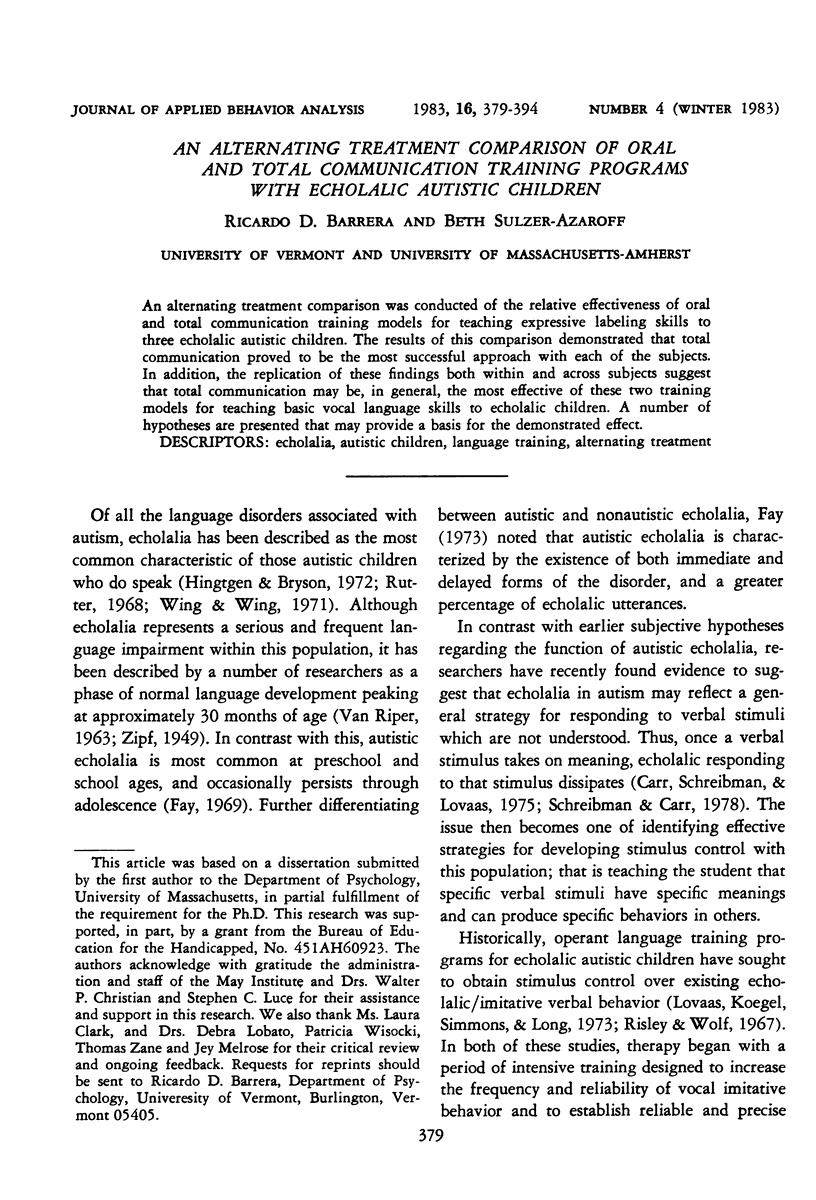
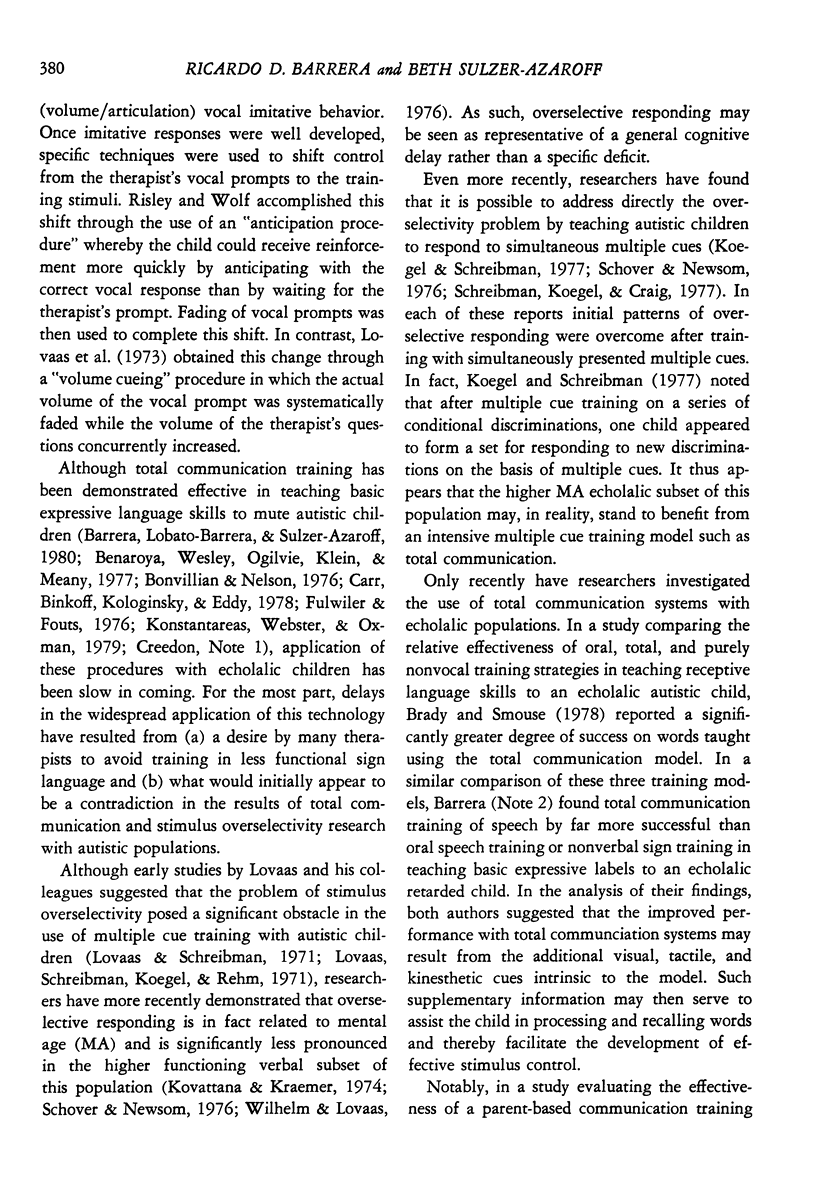
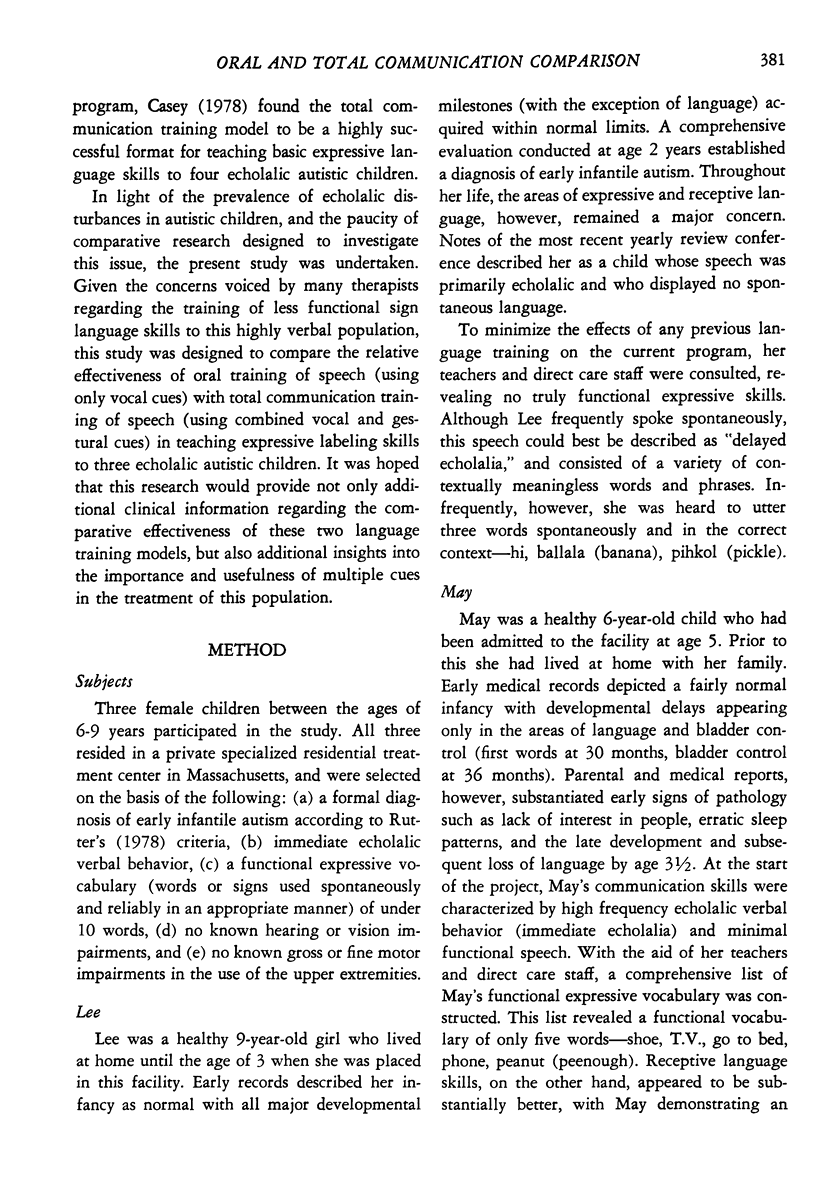
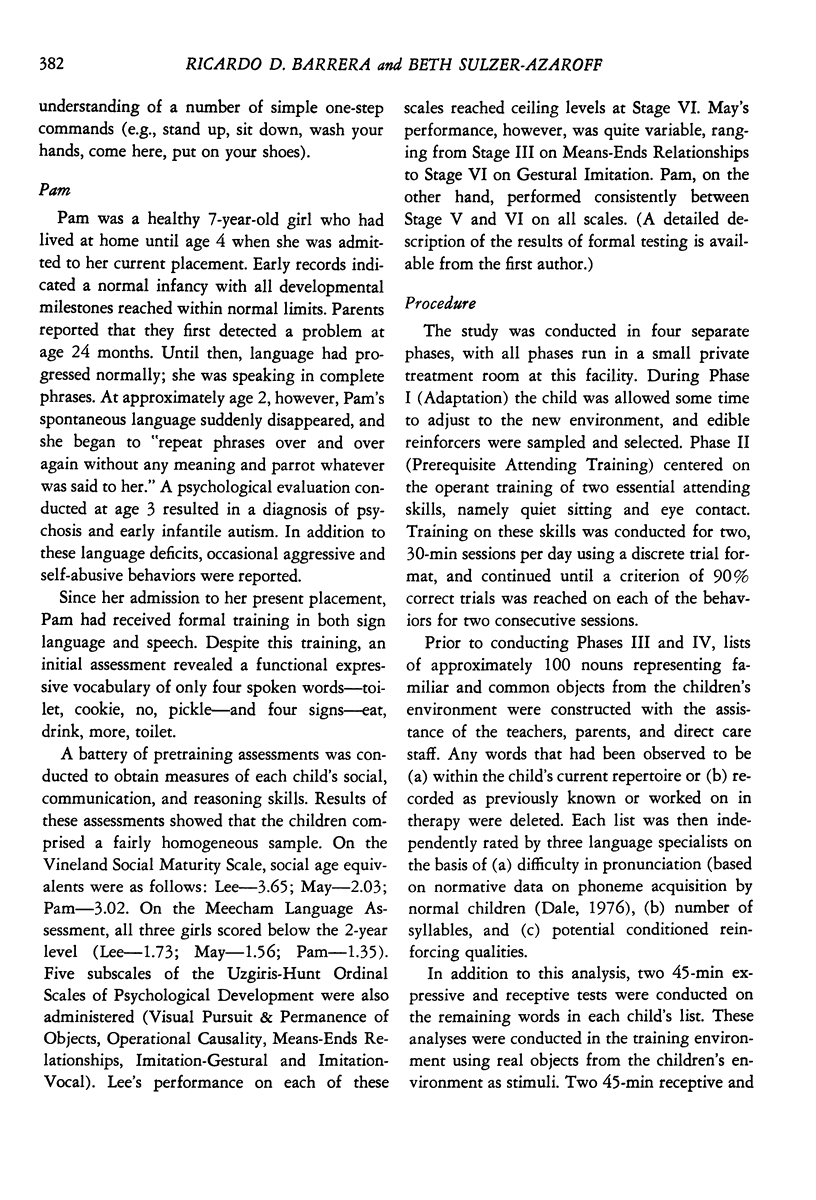
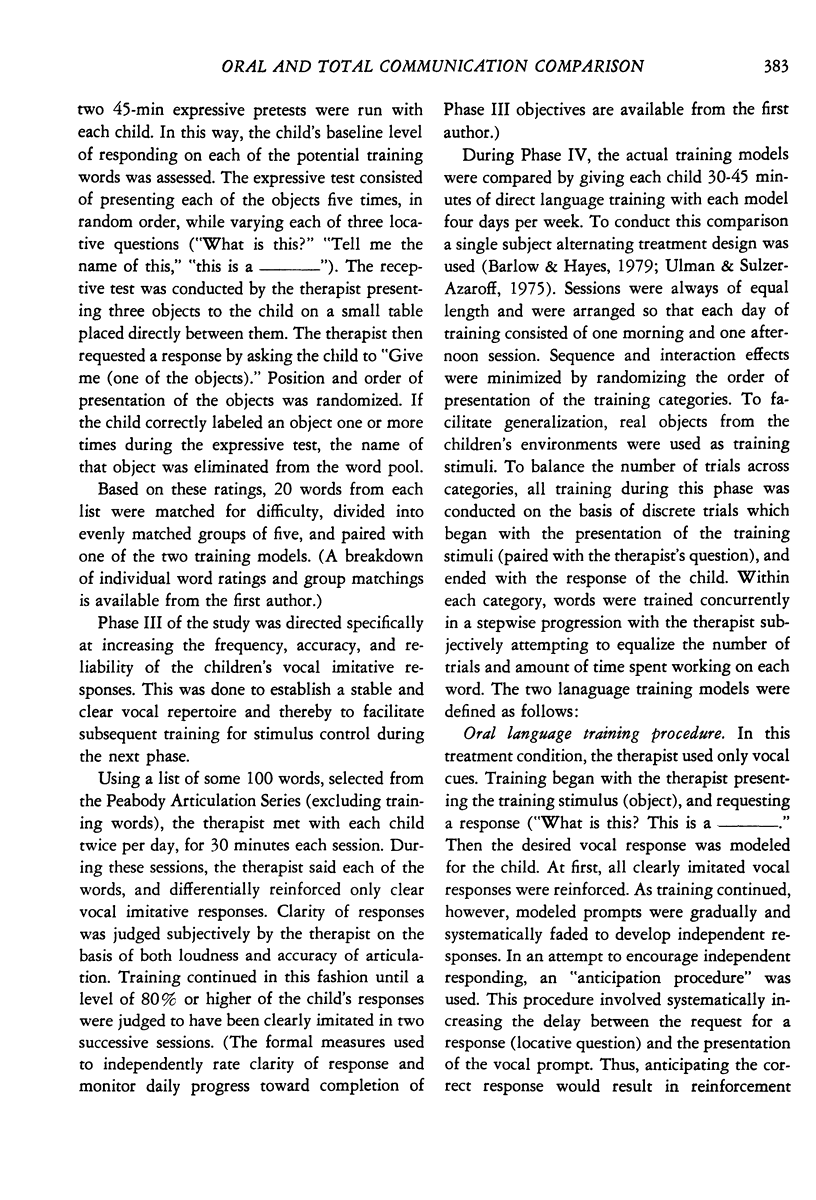
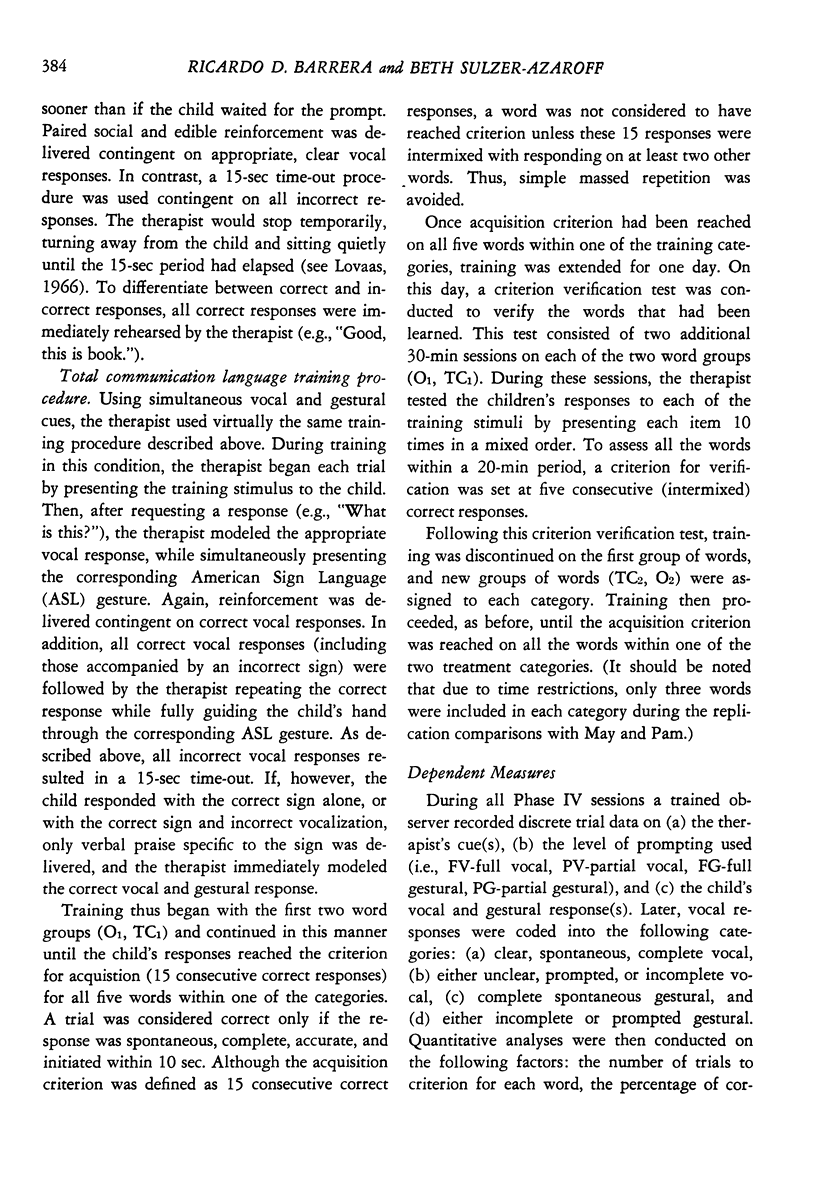
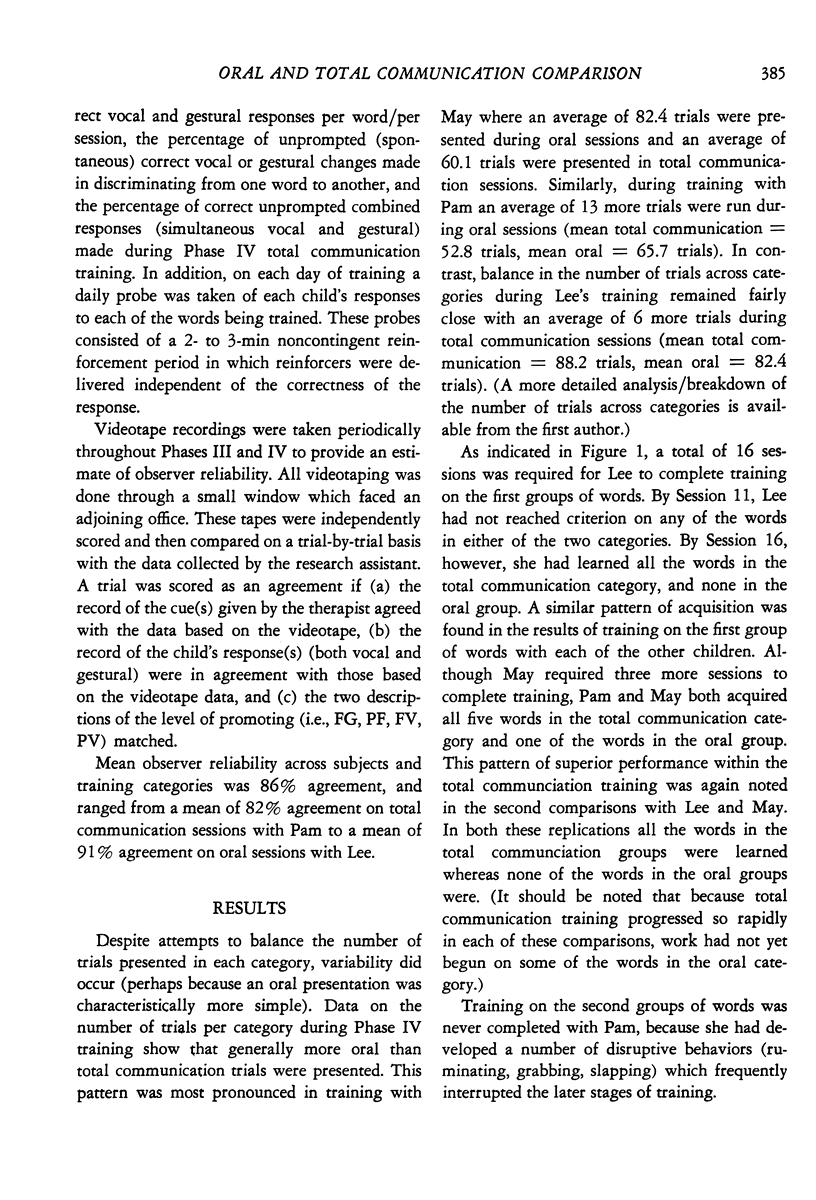
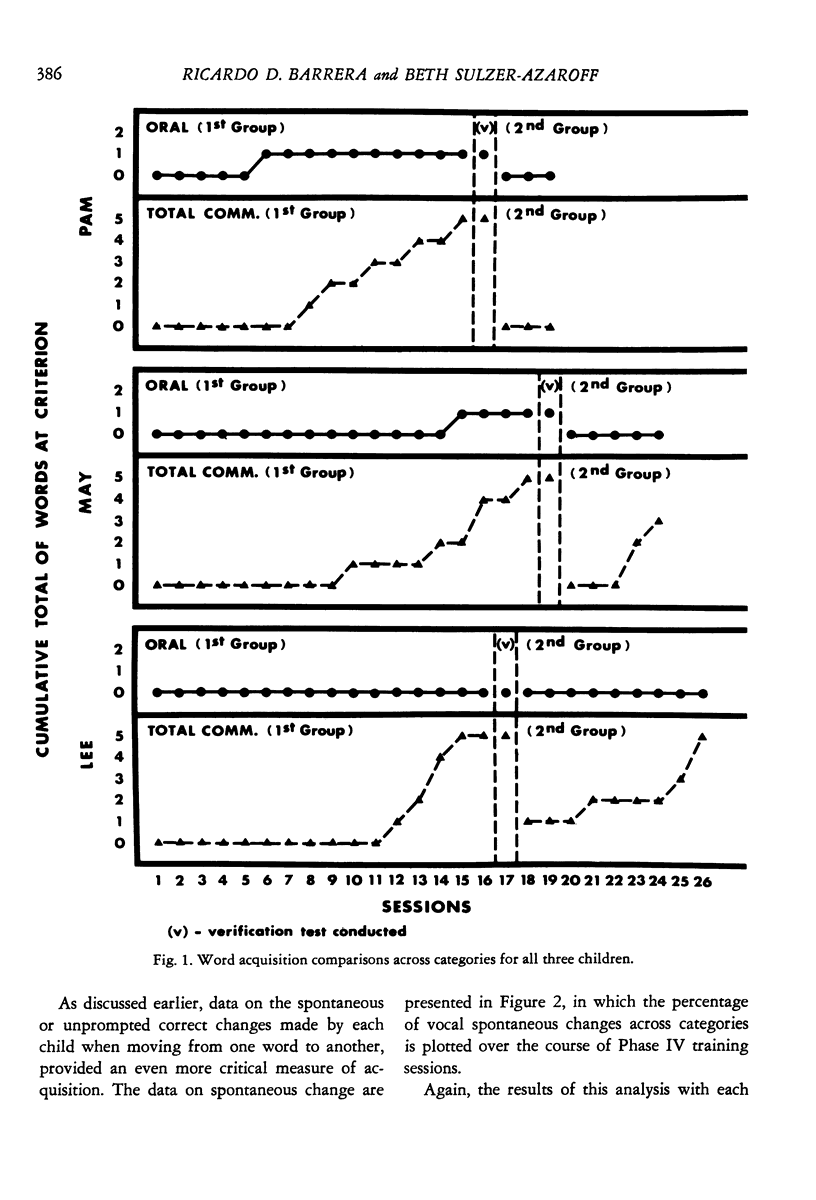
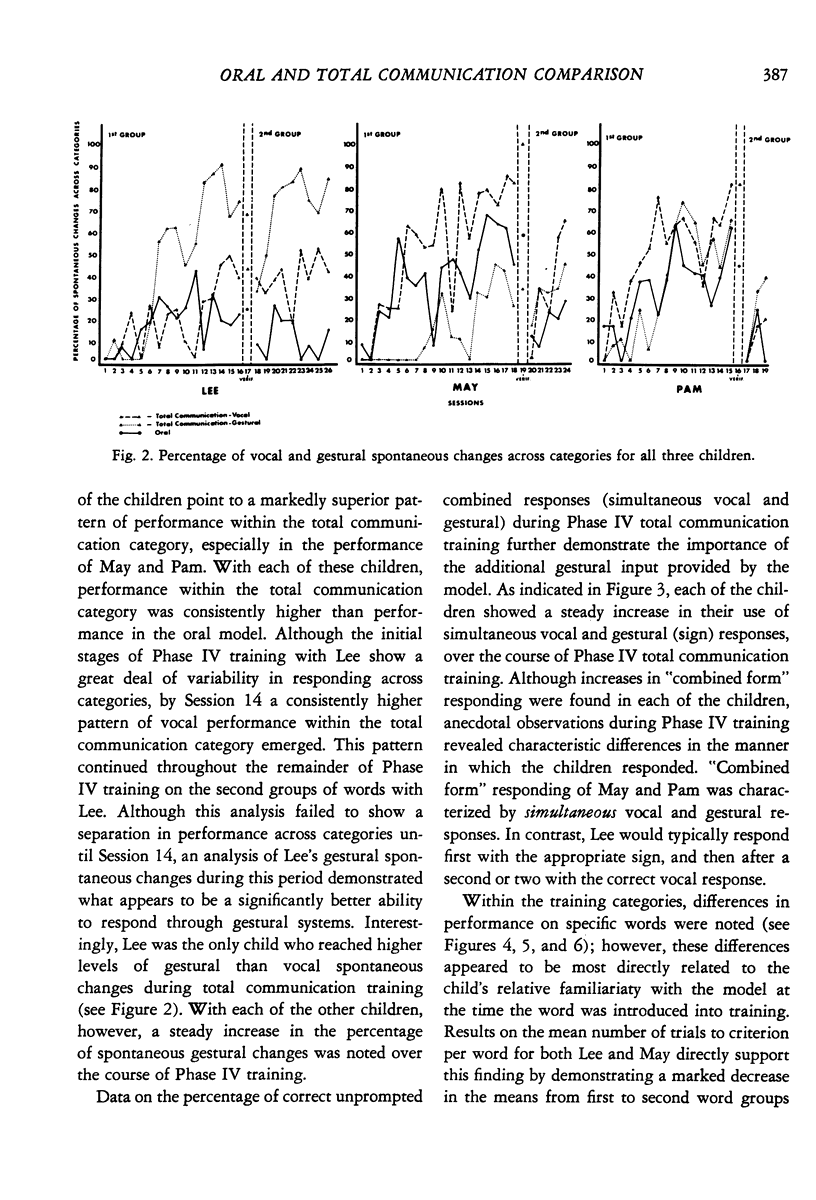
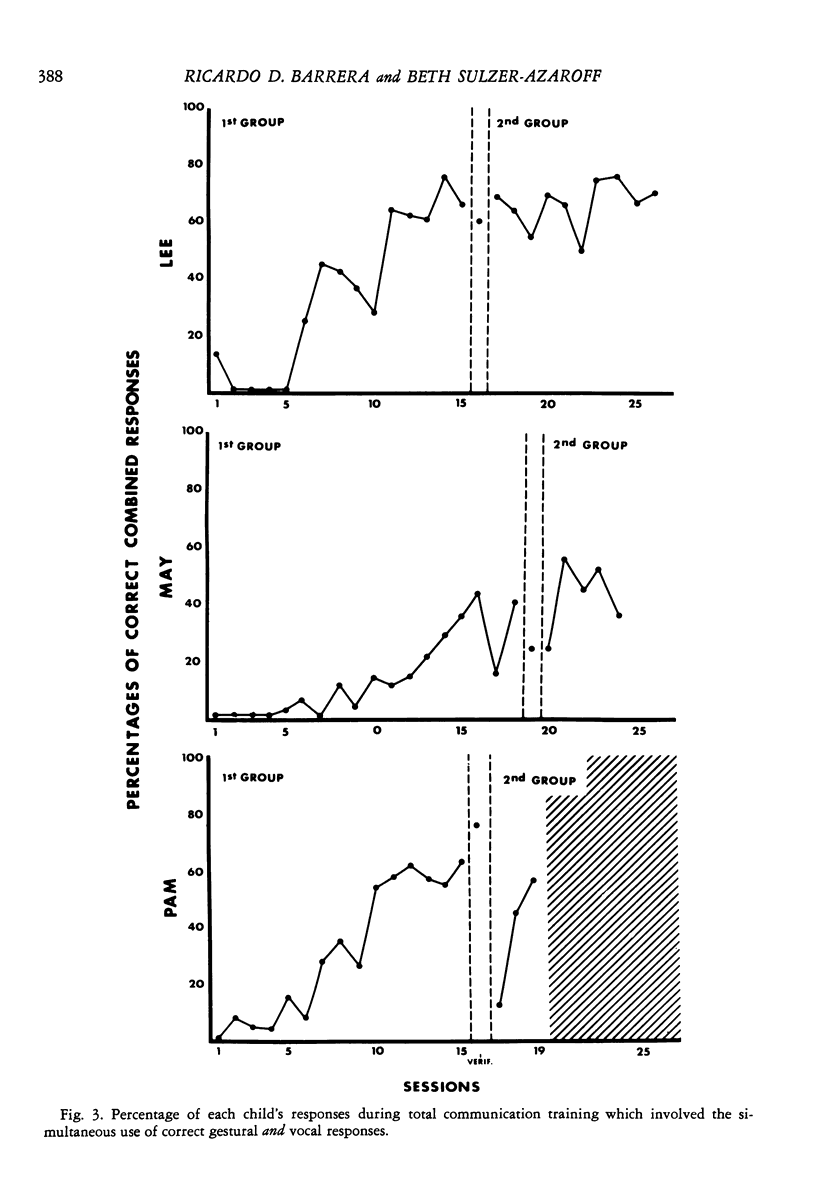
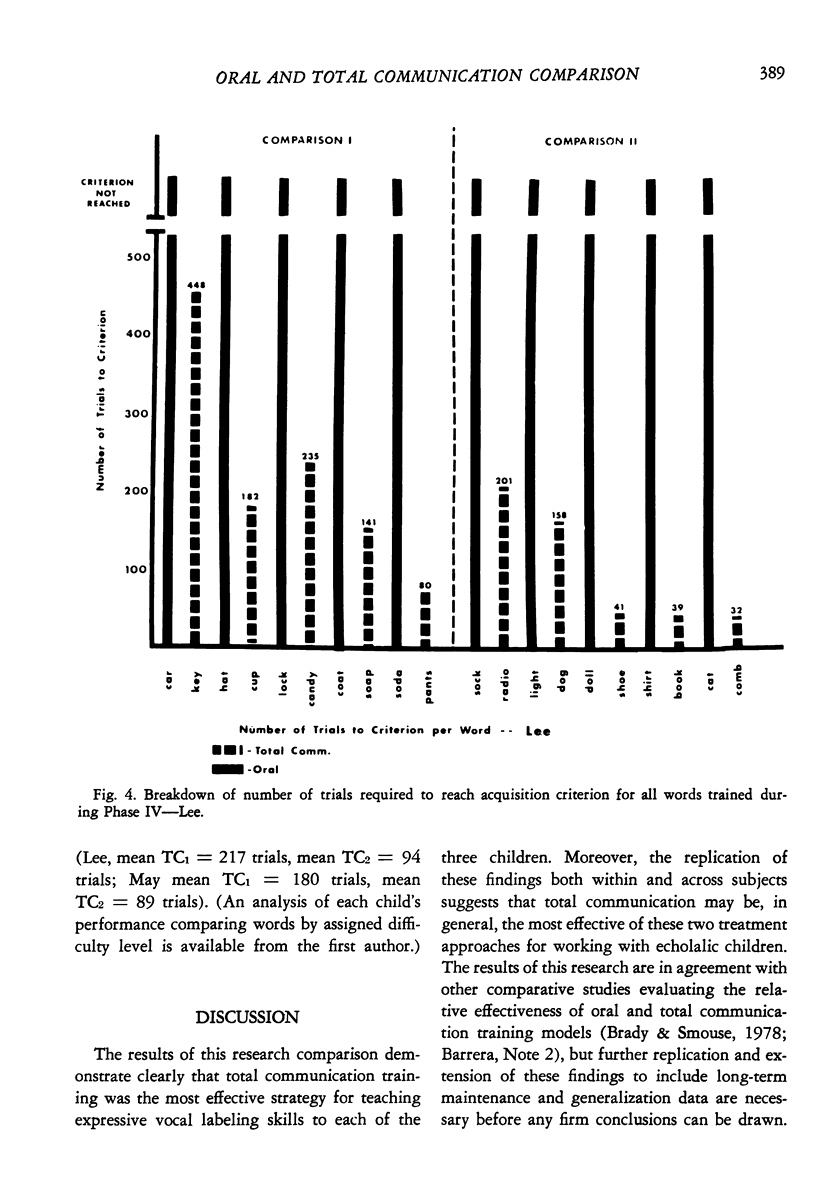
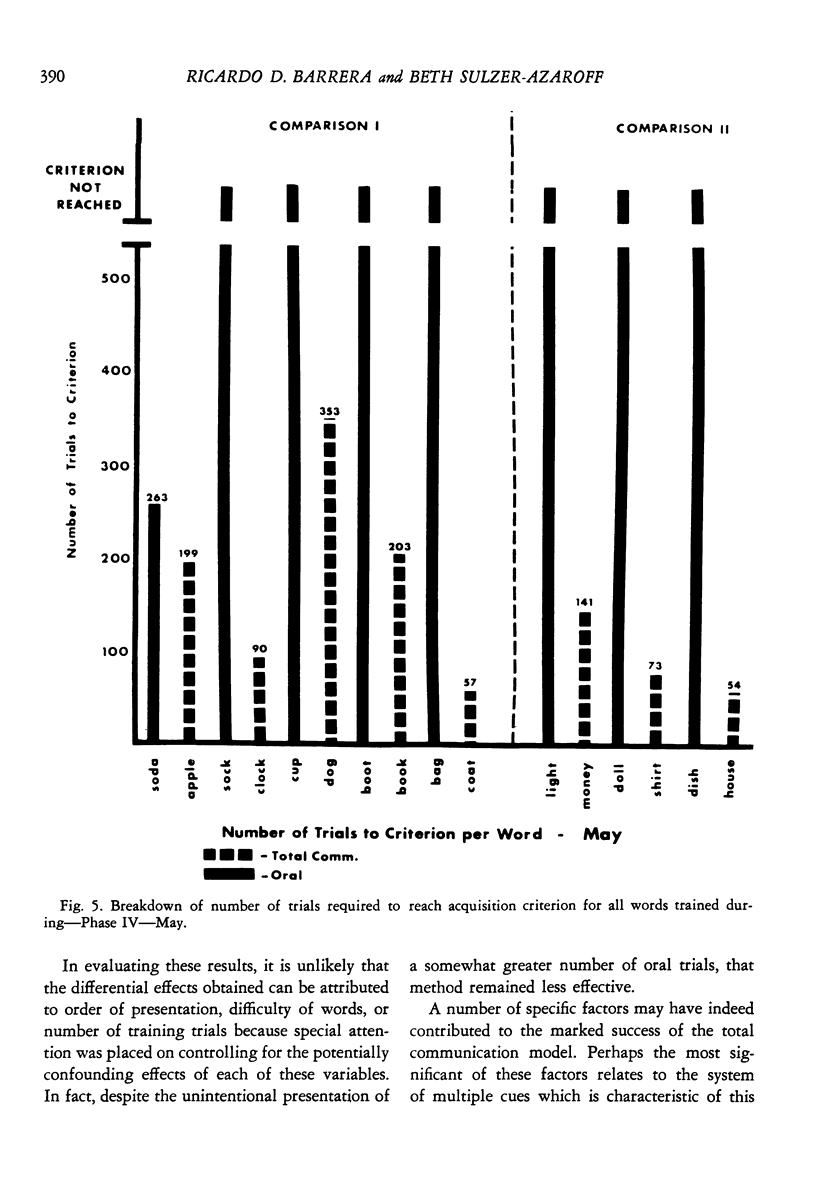
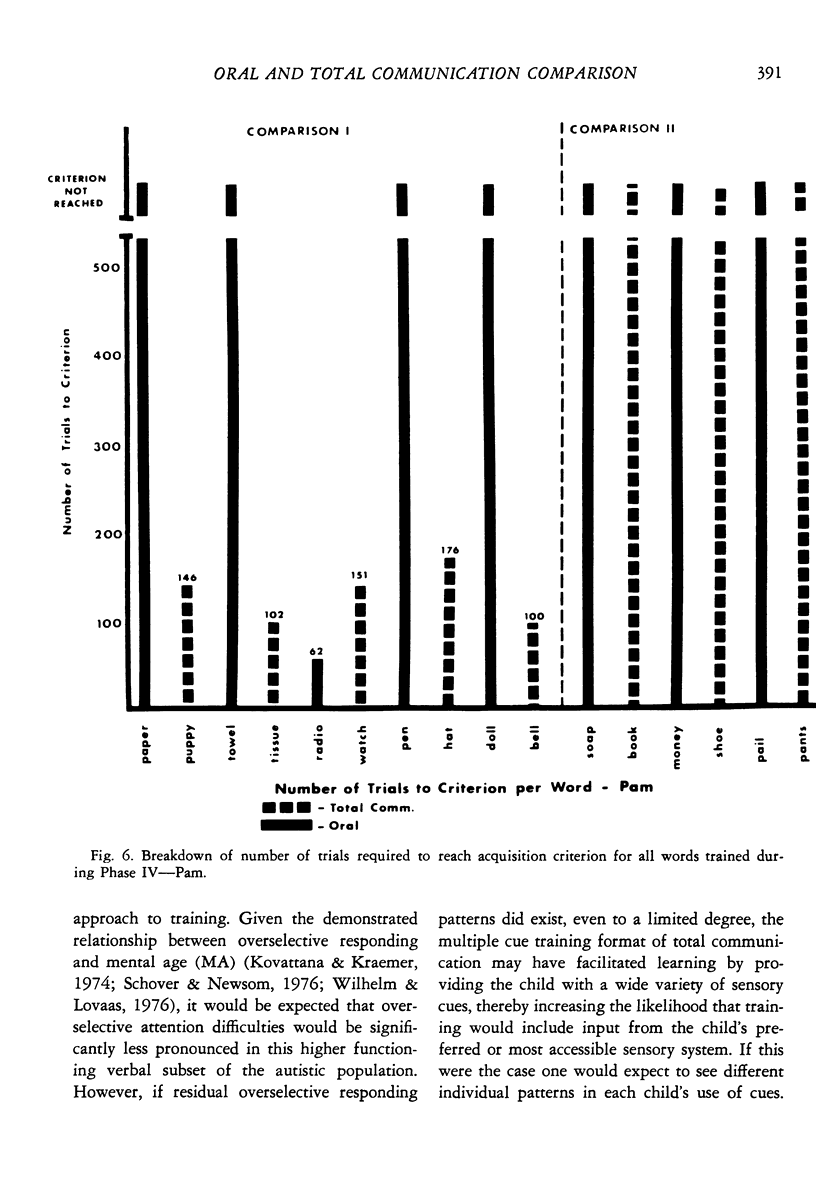
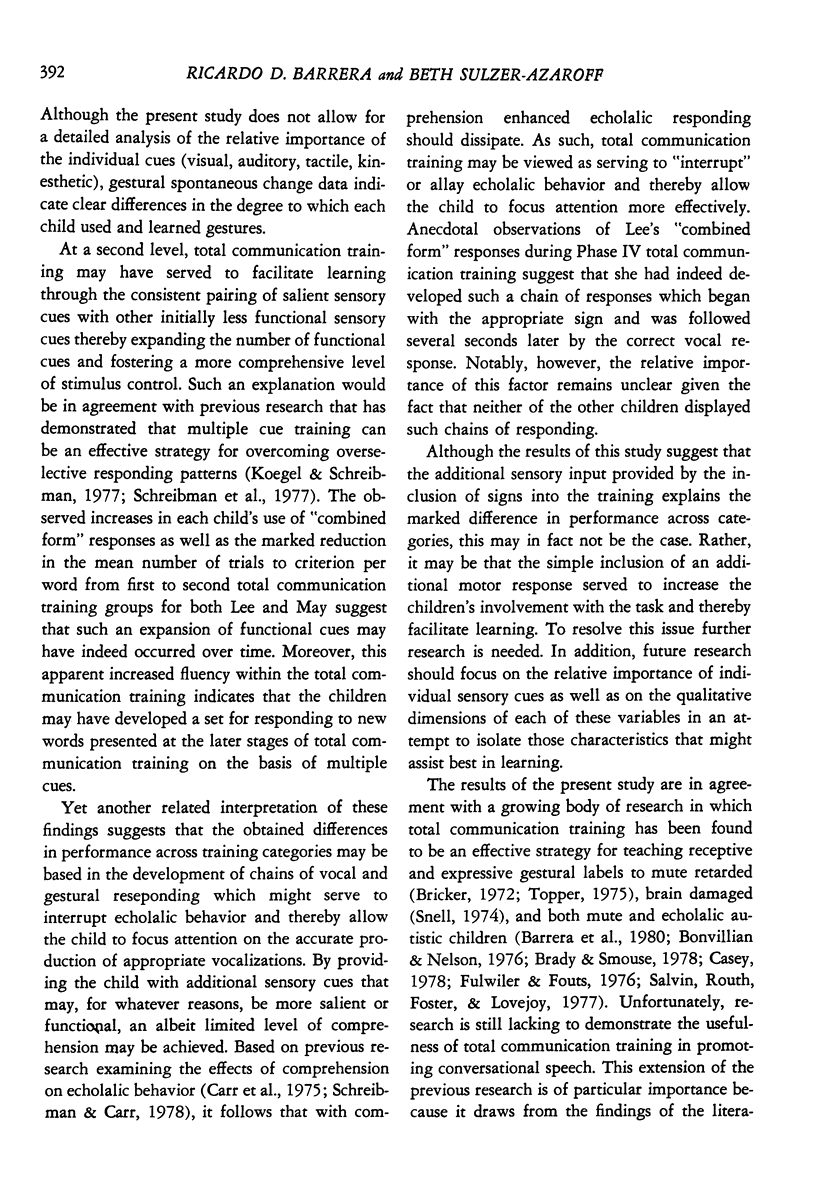
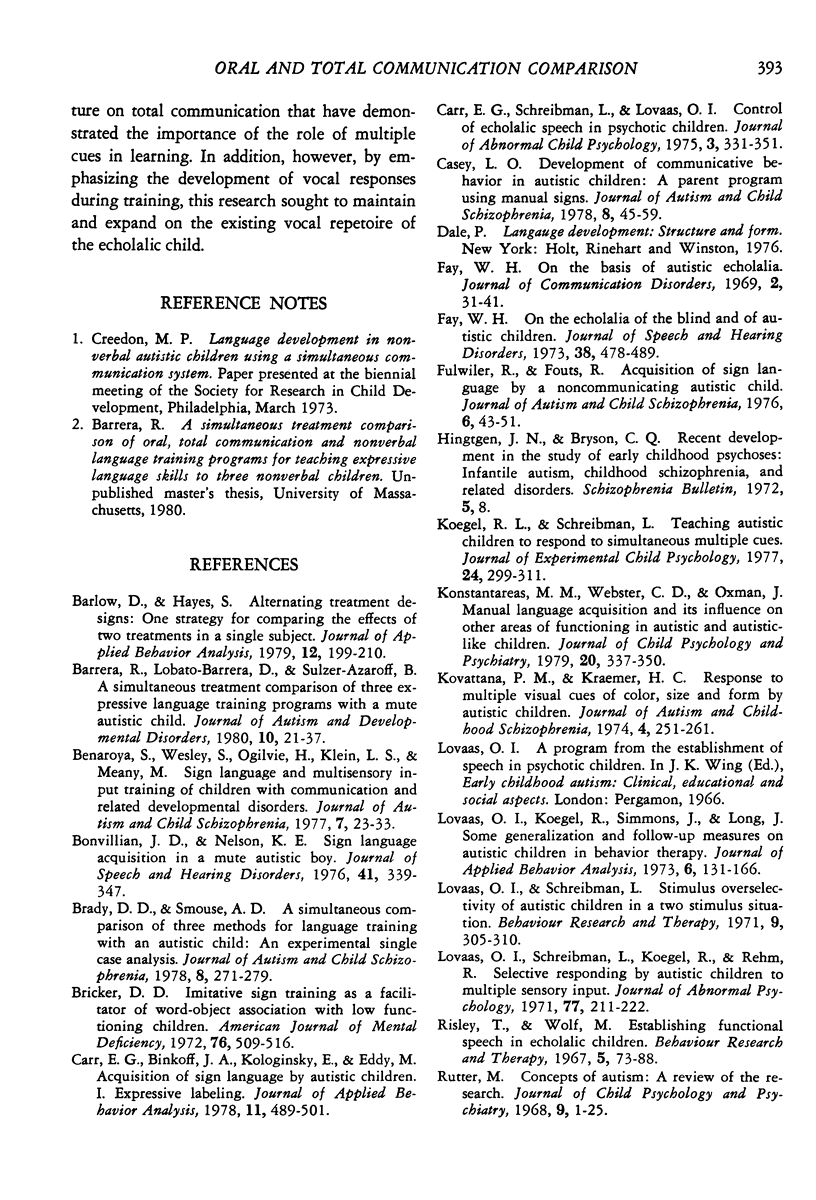
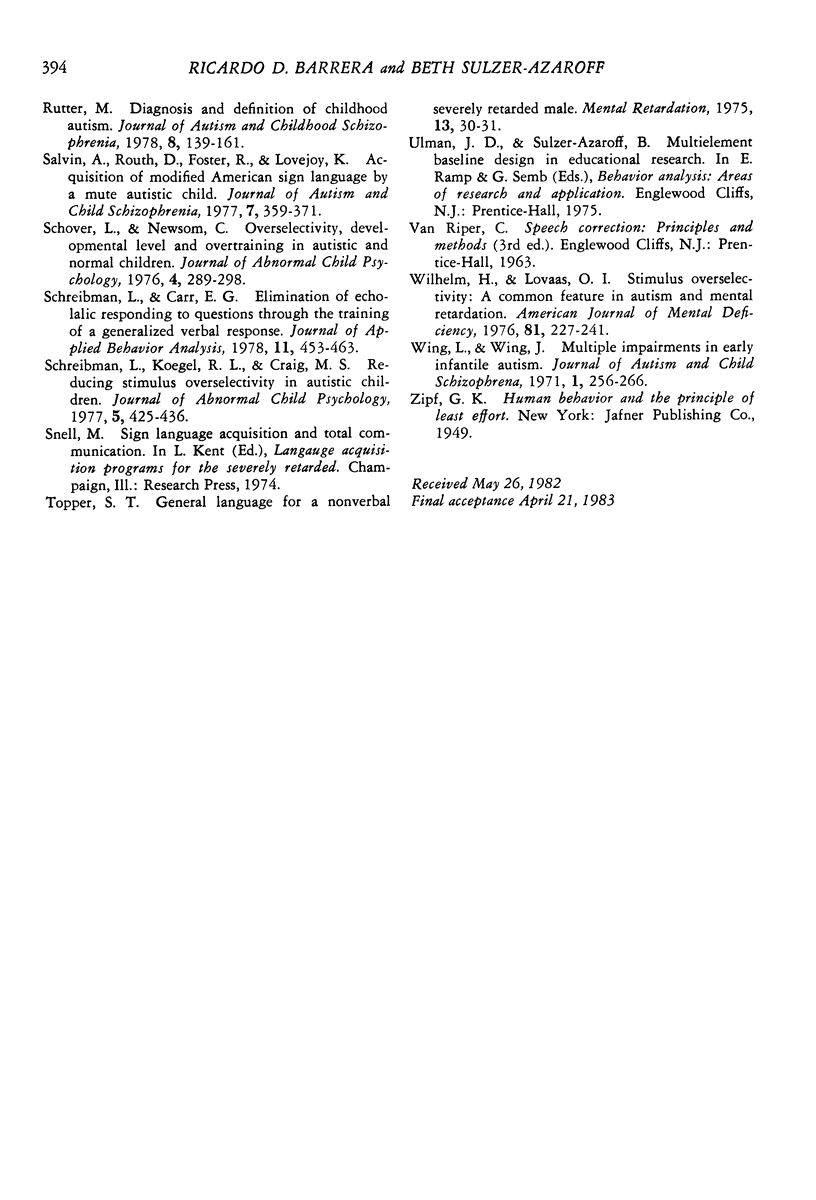
Selected References
These references are in PubMed. This may not be the complete list of references from this article.
- Barlow D. H., Hayes S. C. Alternating treatments design: one strategy for comparing the effects of two treatments in a single subject. J Appl Behav Anal. 1979 Summer;12(2):199–210. doi: 10.1901/jaba.1979.12-199. [DOI] [PMC free article] [PubMed] [Google Scholar]
- Barrera R. D., Lobato-Barrera D., Sulzer-Azaroff B. A simultaneous treatment comparison of three expressive language training programs with a mute autistic child. J Autism Dev Disord. 1980 Mar;10(1):21–37. doi: 10.1007/BF02408430. [DOI] [PubMed] [Google Scholar]
- Benaroya S., Wesley S., Ogilvie H., Klein L. S., Meaney M. Sign language and multisensory input training of children with communication and related developmental disorders. J Autism Child Schizophr. 1977 Mar;7(1):23–31. doi: 10.1007/BF01531112. [DOI] [PubMed] [Google Scholar]
- Bonvillian J. D., Nelson K. E. Sign language acquisition in a mute autistic boy. J Speech Hear Disord. 1976 Aug;41(3):339–347. doi: 10.1044/jshd.4103.339. [DOI] [PubMed] [Google Scholar]
- Brady D. O., Smouse A. D. A simultaneous comparison of three methods for language training with an autistic child: an experimental single case analysis. J Autism Child Schizophr. 1978 Sep;8(3):271–279. doi: 10.1007/BF01539630. [DOI] [PubMed] [Google Scholar]
- Bricker D. D. Imitative sign training as a facilitator of word-object association with low-functioning children. Am J Ment Defic. 1972 Mar;76(5):509–516. [PubMed] [Google Scholar]
- Carr E. G., Binkoff J. A., Kologinsky E., Eddy M. Acquisition of sign language by autistic children. I: Expressive labelling. J Appl Behav Anal. 1978 Winter;11(4):489–501. doi: 10.1901/jaba.1978.11-489. [DOI] [PMC free article] [PubMed] [Google Scholar]
- Carr E. G., Schreibman L., Lovaas O. I. Control of echolalic speech in psychotic children. J Abnorm Child Psychol. 1975;3(4):331–351. doi: 10.1007/BF00917420. [DOI] [PubMed] [Google Scholar]
- Casey L. O. Development of communicative behavior in autistic children: a parent program using manual signs. J Autism Child Schizophr. 1978 Mar;8(1):45–59. doi: 10.1007/BF01550277. [DOI] [PubMed] [Google Scholar]
- Fay W. H. On the echolalia of the blind and of the autistic child. J Speech Hear Disord. 1973 Nov;38(4):478–489. doi: 10.1044/jshd.3804.478. [DOI] [PubMed] [Google Scholar]
- Fulwiler R. L., Fouts R. S. Acquisition of American sign language by a noncommunicating autistic child. J Autism Child Schizophr. 1976 Mar;6(1):43–51. doi: 10.1007/BF01537941. [DOI] [PubMed] [Google Scholar]
- Koegel R. L., Schreibman L. Teaching autistic children to respond to simultaneous multiple cues. J Exp Child Psychol. 1977 Oct;24(2):299–311. doi: 10.1016/0022-0965(77)90008-x. [DOI] [PubMed] [Google Scholar]
- Konstantareas M. M., Webster C. D., Oxman J. Manual language acquisition and its influence on other areas of functioning in four autistic and autistic-like children. J Child Psychol Psychiatry. 1979 Oct;20(4):337–350. doi: 10.1111/j.1469-7610.1979.tb00519.x. [DOI] [PubMed] [Google Scholar]
- Kovattana P. M., Kraemer H. C. Response to multiple visual cues of color, size, and form by autistic children. J Autism Child Schizophr. 1974 Sep;4(3):251–261. doi: 10.1007/BF02115231. [DOI] [PubMed] [Google Scholar]
- Lovaas O. I., Koegel R., Simmons J. Q., Long J. S. Some generalization and follow-up measures on autistic children in behavior therapy. J Appl Behav Anal. 1973 Spring;6(1):131–165. doi: 10.1901/jaba.1973.6-131. [DOI] [PMC free article] [PubMed] [Google Scholar]
- Lovaas O. I., Schreibman L., Koegel R., Rehm R. Selective responding by autistic children to multiple sensory input. J Abnorm Psychol. 1971 Jun;77(3):211–222. doi: 10.1037/h0031015. [DOI] [PubMed] [Google Scholar]
- Lovaas O. I., Schreibman L. Stimulus overselectivity of autistic children in a two stimulus situation. Behav Res Ther. 1971 Nov;9(4):305–310. doi: 10.1016/0005-7967(71)90042-8. [DOI] [PubMed] [Google Scholar]
- Risley T., Wolf M. Establishing functional speech in echolalic children. Behav Res Ther. 1967 May;5(2):73–88. doi: 10.1016/0005-7967(67)90001-0. [DOI] [PubMed] [Google Scholar]
- Rutter M. Concepts of autism: a review of research. J Child Psychol Psychiatry. 1968 Oct;9(1):1–25. doi: 10.1111/j.1469-7610.1968.tb02204.x. [DOI] [PubMed] [Google Scholar]
- Rutter M. Diagnosis and definition of childhood autism. J Autism Child Schizophr. 1978 Jun;8(2):139–161. doi: 10.1007/BF01537863. [DOI] [PubMed] [Google Scholar]
- Schover L. R., Newsom C. D. Overselectivity, developmental level, and overtraining in autistic and normal children. J Abnorm Child Psychol. 1976;4(3):289–298. doi: 10.1007/BF00917765. [DOI] [PubMed] [Google Scholar]
- Schreibman L., Carr E. G. Elimination of echolalic responding to questions through the training of a generalized verbal response. J Appl Behav Anal. 1978 Winter;11(4):453–463. doi: 10.1901/jaba.1978.11-453. [DOI] [PMC free article] [PubMed] [Google Scholar]
- Schreibman L., Koegel R. L., Craig M. S. Reducing stimulus overselectivity in autistic children. J Abnorm Child Psychol. 1977 Dec;5(4):425–436. doi: 10.1007/BF00915090. [DOI] [PubMed] [Google Scholar]
- Sperber R. D., Ragain R. D., McCauley C. Reassessment of category knowledge in retarded individuals. Am J Ment Defic. 1976 Nov;81(3):227–234. [PubMed] [Google Scholar]
- Topper S. T. Gesture language for a non-verbal severely retarded male. Ment Retard. 1975 Feb;13(1):30–31. [PubMed] [Google Scholar]
- Wing L., Wing J. K. Multiple impairments in early childhood autism. J Autism Child Schizophr. 1971 Jul-Sep;1(3):256–266. doi: 10.1007/BF01557347. [DOI] [PubMed] [Google Scholar]


